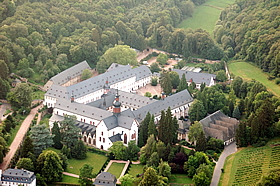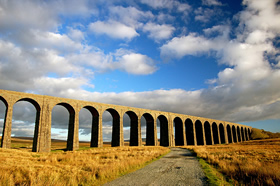21 Sep 2010 UK & EUROPE
Back from my biennial catching-up with family and friends in the antipodes. I left Brisbane on the 7th of August. Read about my travels.
London
This time cousin Leila was too incapacitated for me to stay with her, so I booked in to a hotel, excellently located in Belsize Park, for the two weeks of my London stay. For the first time in three visits I did not meet with Sandrine Meats.
This trip I did things I previously thought too out of the way. I spent a tremendous day at Chatham Dockyard, easily reached by train from St Pancras Station. Between trains I even managed to book my Vienna-Frankfurt ticket. I also attended the first day of the Oval Test between England and Pakistan, highly enjoyable and a reminder of happy days spent there in the past. On my way home I went on the London Eye, which I had avoided to date, fearing a long wait to get on board. I don’t suppose it took much more than 25 minutes from joining the ticket queue to boarding the cabin. It was worth every penny.
I visited the Wallace Collection for the first time in decades and was gob-smacked by the Sèvres porcelain and the Hobbema landscapes. I went to a marvellous concert of baroque music by the London Octave in St Martin’s-in-the-Fields with its airy interior and superb acoustics.
I also caught up with filmmakers John Goldschmidt and Ian Johnson, whom I knew from art school days and had not seen in ages. It was lovely to see them again.
Austria
A highlight of the trip was staying with Herbert Distel and his wife Gil at their lovely home in Katzelsdorf, a village some 50 km south of Vienna. Herbert and I had last seen one another in 1968 at the Public Eye Exhibition in Hamburg, which I co-curated. He now works in sound.
We had many invigorating and stimulating conversations. Talking with Herbert, I realised how artistically isolated I am on Tamborine Mountain. He helped me to see my error in pandering to the brief attention span of arts administrators by including ever shorter segments on my DVDs.
We visited Eisenstadt, where Haydn was the Esterharzy’s court composer. I had a memorable plum tart in the casino café in Baden, half-way between Vienna and the Distels.
On my last day, Gil took me into Vienna. Herbert does not like sightseeing. We walked for hours, looking at, but not entering some of Vienna’s famous buildings. For no apparent reason we strolled into the Museum of Modern Art’s shop. I noticed some good art books on display and on the spur of the moment enquired after a book of photographs by August Sander. To my utter astonishment and delight, the shop assistant checked her stock and informed me that she had seven copies of a paperback containing 60 portraits of his fellow Germans, dating from 1910 to 1929, which would cost me ten euros or thereabouts. I had tried and failed to buy such a book in London and Frankfurt in 2008. Whether photographing people or landscapes, Sanders photos are closer to the work of a supreme painter than those of any photographer I have seen.
Frankfurt
My four-day stay in Austria was all too brief. I was off to Frankfurt by train to catch up with Christina and enjoyed every minute of the journey. This trip the plan was for us to visit places within reasonable driving distance of Frankfurt and my first choice was Limburg on the river Lahn, a town I had been to with my parents as a schoolboy and more recently seen from the train to Amsterdam. Like a smaller scale version of Durham, Limburg has a Romanesque cathedral and an adjoining castle atop a hill almost cut off by a river, with mediaeval houses covering its slopes. The better to absorb the ambience, we had an excellent, traditional German lunch in an ancient, half-timbered tavern in the old town.
The following day we went to Kloster Eberbach, a former Cistercian monastery, one of the largest in Germany, with church and an extensive group of buildings ranging in date from Romanesque to Baroque. Part of the film The Name of the Rose was filmed here. The Rhine was not far away. The rain, which had mercifully held off while we toured Eberbach, was torrential as we drove along the fast flowing river. We were at the southern end of the gorge country, famed for its castles. Indeed we could see one or two ahead and I was tempted to ask Christina to keep going to the next one and the one after that!

Kloster Eberbach
Yorkshire
I had last been to Yorkshire, where I lived as a schoolboy throughout the 50s and visited regularly while my parents remained there in the 60s and 70s, in 2006. This time I decided to go to places I had never seen before, such as Beverley. The Minster lives up to its sublime reputation. The previous week I was in Wells with Clive and once again marvelled at the people-friendly nature of this gem of a city. Beverley had a similar feel; it too has a largely pedestrianised centre full of mediaeval and Georgian buildings with a felicitous variety of urban spaces, is well-kept and exudes an air of prosperity. What especially pleased me about both places was the enjoyment that their beauty and antiquity seemed to inspire in people quietly and publicly going about their business.
At last I undertook to see one of the most remarkable buildings of the 19th century, Temple Mill in Leeds, so named because the design of its principal façade and additional office building was based on the Temple of Horus at Edfu in Egypt. Although it is a Grade I listed building, it is in such a dire state of repair that it may well collapse before it can be saved. In 1836 when it was built, this flax mill was reputedly the largest single room in the world. It was lit by conical skylights, of which Frank Lloyd Wright might have been proud, and the iron columns which support the roof were hollow to carry rainwater to the drains. Sheep were used to graze on the grass which covered the roof as a form of climate control, to prevent the flax from becoming dried out and unmanageable.

Temple Mill
Warming to my industrial archaeology theme, I dedicated the best part of a day to visiting some of the world’s earliest textile mills in Derbyshire’s World Heritage-listed Derwent Valley. The oldest part of Arkwright’s Masson Mill was familiar to me from books, but the setting in a deep, narrow, densely wooded gorge next to a swiftly flowing stream was totally unexpected. The earlier Cromford Mill, a mile or so down river, was even more pleasing to the eye and on a scale which must have been stunning at the time it was built.
I wanted to combine my visit to the mills with a detour to Haddon Hall, which meant that I could not include the famous mill at Belper built by the redoubtable-sounding Jedediah Strutt. I arrived at Haddon Hall after the car park closed and leaving my car near the gatehouse, walked to the house, reckoning that I could at least get a better view of this most mellow and romantic fortified manor which dates from the 12th to the 17th centuries. Fortunately, having agreed to pay the full entry price, I was granted a curtailed guided tour which extended to about 45 minutes, so that it did not seem too rushed.

Ribblehead Viaduct
As in 2006, I also travelled on the Settle to Carlisle line, the most scenically dramatic train journey in the UK, thanks to some of the greatest feats of railway engineering. A couple of days earlier, driving from Settle to Hawes in upper Wensley Dale, I was thrilled to see the pièce de resistance of the line, the Ribblehead Viaduct, whose 24 arches span 402 metres. I parked the car and an 800 metre walk took me under the highest arch of the viaduct, lined with immaculately laid bricks some 32 metres above me.
Peter Kuttner


